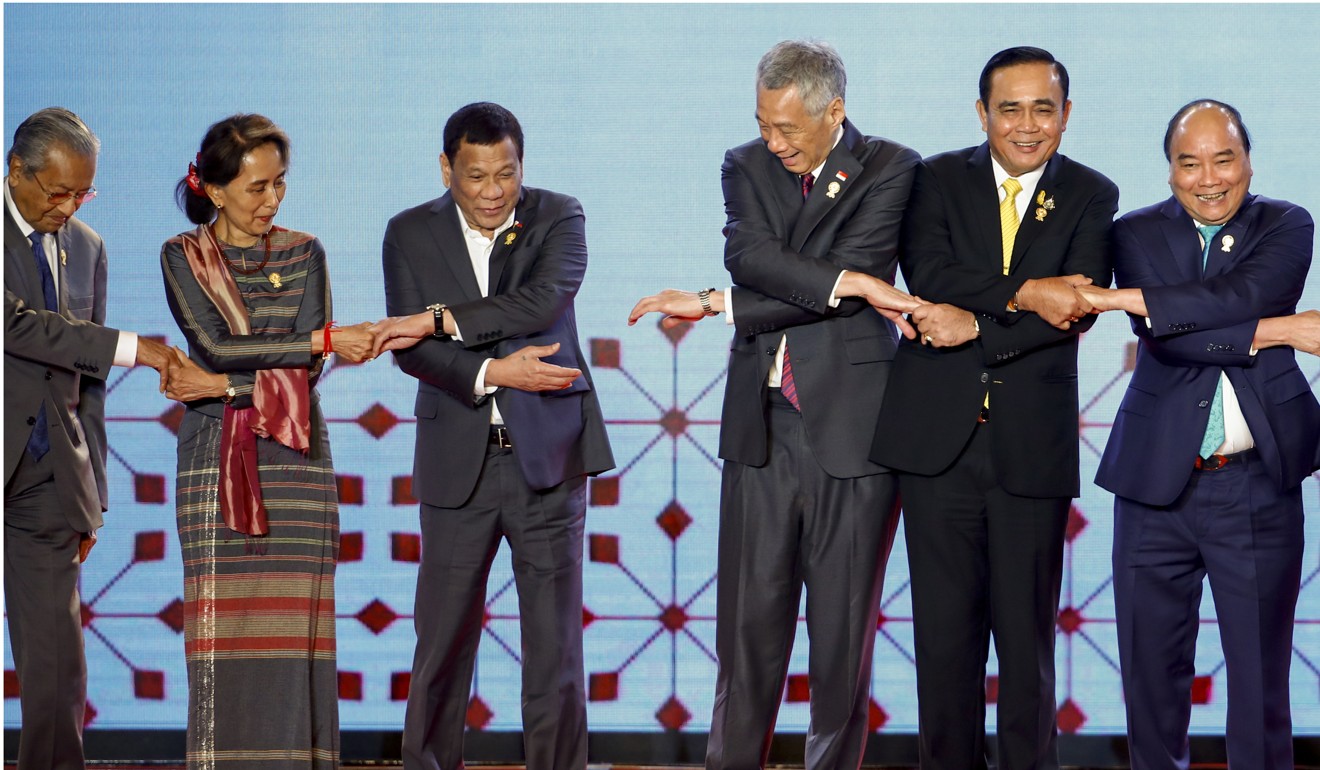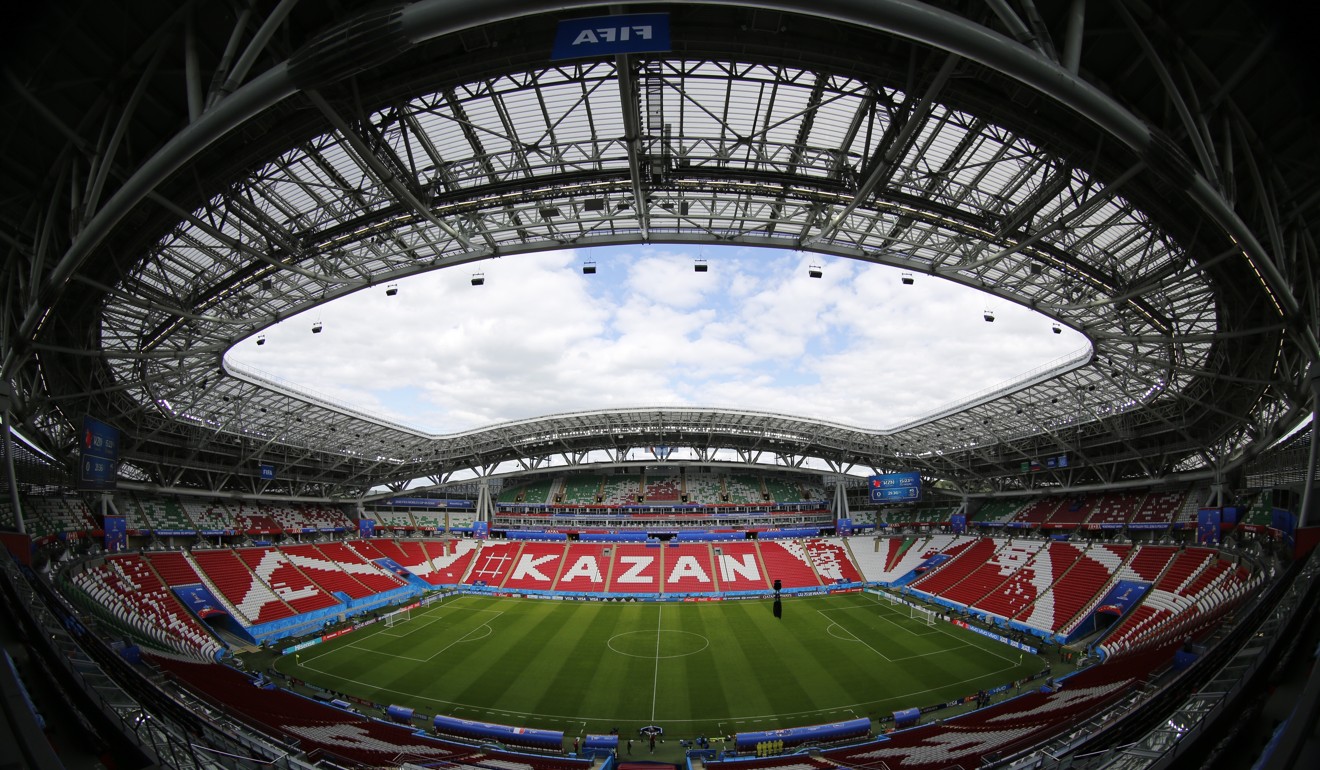
Southeast Asia’s football World Cup 2034 bid: this time for Asean, or just a pipe dream?
- News of the bloc’s bid for the 2034 World Cup has been met with incredulity by some
- But while costs and infrastructure will be tough to tackle, the idea might not be such a long shot

Lionel Messi and Cristiano Ronaldo might have retired, but in the not-so-distant future, their successors could be lighting up stadiums in a part of the world that has never played host to soccer’s biggest stage – Southeast Asia.
That’s right, the World Cup may well be on its way to the region, after Thailand Prime Minister Prayuth Chan-ocha announced that the Asean countries (the Philippines, Cambodia, Indonesia, Laos, Malaysia, Myanmar, Singapore, Thailand, Vietnam and Brunei) would submit a joint bid for the 2034 tournament.
Initially, the news was welcomed by Asean Football Federation (AFF) president Khiev Sameth, but, according to Singapore’s The Straits Times , Asian Football Confederation general secretary Windsor John was less convinced. He said he “did not know about the joint bid” and still did not know if “it is serious or not”.

Meanwhile, Thai news website Matichon’s reader survey also brought less than convincing results, with 70 per cent of respondents disagreeing with the idea of the Association of Southeast Asian Nations hosting the 2034 event, citing more urgent issues.
Southeast Asia may have a huge appetite for soccer, but some experts said the region needed more stadiums, motorways, airports, train stations and some good old Asean solidarity before it could even consider hosting a World Cup.
“Asean countries are different from each other. Some are not ready for a big project like a World Cup – they need to build stadiums and make sure facilities for players and fans are well-equipped,” said Surachai Jaturapattarapong, technical director of Thai League 1 side Bangkok Glass.
Under guidelines from Fifa, soccer’s global governing body, the opening match and final have to be played in an 80,000-seat stadium, while the semi-finals and earlier games have to be in stadiums that can house 60,000 and 40,000 people, respectively.
Currently, there are 20 Asean stadiums with a capacity of at least 40,000, but only two – Bukit Jalil and Shah Alam in Malaysia – are capable of holding at least 80,000 fans. There are no stadiums in Brunei, Laos and the Philippines that meet World Cup guidelines.

LONG WAY OFF
To catch up, Southeast Asia would have to spend big, observers said.
“Asean is not ready for a World Cup because there’s no infrastructure in place,” said Jeffrey Low, a prominent former Singapore sports journalist who had covered 10 World Cups since 1974.
He noted that the 2002 joint hosts, South Korea and Japan, were favoured for their smooth transport systems and ready-made stadiums – something that certain parts of Southeast Asia lacked.
“If you want to aim big, build up your infrastructure first. I could get from Tokyo to Osaka quickly in 2002, so if you cannot solve transport issues, then you will have to spend like Qatar now,” he added.
Qatar, the 2022 World Cup host, is expected to spend around US$200 billion on improving its public transport system and building roads and airports, eclipsing Russia’s US$14.2 billion spending in 2018 – the most expensive World Cup to date.

A little over 3 million tourists visited Russia during last year’s World Cup, so Asean countries could expect an even bigger number by 2034 – making new airports, train stations and motorways even more important.
Given the vastly different developmental stages of the Asean nations, it would be impossible to ask each to pay the same amount, said Marc Lim, former sports editor at The Straits Times .
This is our moment. Someone has to get things going and you cannot shoot people down for their ideas.
“An Asean World Cup requires a strong united vision because the tournament is expensive to hold.
“On paper, holding a joint World Cup makes sense because Southeast Asia is well-connected and travelling between the countries is not too expensive. But who’s going to foot the bill?” added the former journalist, who covered the 2006 and 2014 World Cups.
JOINT BIDS IN VOGUE
This is not the first time a joint Asean World Cup has been discussed.
In 1996, Singapore’s then minister for community development, Abdullah Tarmugi, encouraged AFF to pursue a bid. In 2011, the late former Asean secretary general Surin Pitsuwan supported a potential joint bid for the 2030 World Cup, but described it as “a Herculean task”.
The most recent call came in 2017 when Joko Driyono, former vice-president of Indonesia’s Football Association, suggested a joint bid from two to three nations.
One benefit from a joint Asean World Cup would be the sharing of the exorbitant costs. With the World Cup’s expansion from 32 to 48 teams from 2026, more money and resources will be needed to host the event. Smaller countries will now have to team up if they want to do so.
To date, the World Cup has been jointly hosted only once – in 2002 by South Korea and Japan. The United States, Canada and Mexico will be the second joint hosts, having won the bid for the 2026 tournament.
“Southeast Asia must learn from Qatar, as well as the 2026 World Cup hosts, in order to gain experience to host a future World Cup, which will definitely happen,” Surachai said.

Asean can also look to the European Football Championship, or Euro, which has a growing track record of joint hosts – Belgium and the Netherlands in 2000, Austria and Switzerland in 2008, and Poland and Ukraine in 2012. The competition will go continent-wide next year when it will be held across 12 cities in 12 countries – from London and Rome to Bucharest and Baku.
That means staging an Asean World Cup in potentially fewer cities may not be as inconceivable as some believe.
“The shift [to multiple hosts] opens up possibilities for many more countries, especially the Asean countries,” said Ivan Codina, managing director for Southeast Asia, Japan, South Korea and Australia of LaLiga, Spanish soccer’s top division.

ASEAN: THE WAY FORWARD
Previously, an Asean World Cup was seen as a pipe dream. But not today. Depending on Qatar’s success, Asia could be the next hotbed for the World Cup.
Statistics provided by Fifa after last year’s World Cup in Russia showed almost 1.6 billion people in Asia tuned in for the tournament, accounting for almost half of all global viewers.
Indonesia, Vietnam and Thailand were part of six countries that contributed to 50 per cent of Asia’s views.
“Asean already has the fans and is able to welcome large numbers of tourists regularly,” said Tom Smith, president of football for Asia at agency Lagardère Sports. “More importantly, there has to be extensive feasibility studies to ensure that an Asean World Cup has the logistics and can leave a legacy – how football can play a long-term role in the region.”
R. Sasikumar, founder of sports marketing firm Red Card Global, said an Asean World Cup was possible – but only if four to five countries volunteered as hosts.
“Fifa’s objective is to bring the game to the fans, and people are soccer-mad in this part of the world. With transport hubs to receive flights from the rest of Asia and the Middle East, we are at the epicentre of a lucrative market,” he said.
“If South Africa can host the World Cup, so can Asean. The bigger stadiums would just need to be refurbished and solve their traffic issues – it’s a logistical issue rather than a conceptual one,” he said.
“This is our moment. Someone has to get things going and you cannot shoot people down for their ideas. But at the same time, we cannot get ahead of ourselves because there is much more to be discussed.” ■